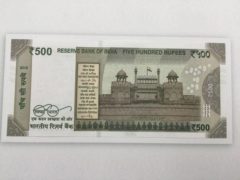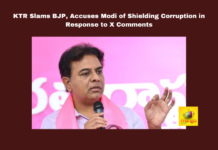In what was perhaps an earth shattering yet progressive announcement, Prime Minister Narendra Modi declared that Rs. 500 and Rs. 1000 will no longer be valid as of 00:00 hours from 9th November 2016. And we thought that Hillary-Trump Election or the NDTV ban would be the big news! Little did we know that Mr. Modi had a master plan of his own.
The news came around 8.30 P.M., last night on 8th November 2016, with an announcement also from the RBI Officials, followed by Narendra Modi’s live speech. “From Midnight November 8, 2016 today, Rs. 500 and Rs. 1000 notes are no longer legal tender,” said Mr. Modi as millions of people watched with bated breath. In his 40 minute address, which was first in Hindi and then in English, Modi told that the denominations will be “just worthless piece of paper.” However, all notes in lower denomination of Rs. 100, Rs. 50, Rs. 20, Rs. 10, Rs. 5, Rs. 2 and Re. 1 and all coins will continue to be valid.


The new era will see the emergence of the new Rs. 500 and Rs. 2000 notes. The first biggest denomination of Rs. 10,000 was circulated in British Raj, around 1938, but these were demonetised in 1946. Then again when Prime Minister Morarji Desai was in power, the Rs. 10,000 made a comeback only to be withdrawn in 1978. But this time the Rs. 2000 seems to be heading for a new life directed at decreasing the black money in India. It has to be said that this is truly a strategic move on the part of Modi along with RBI to curb corruption in the country.










As with every progressive movement, this one too had its part of criticism attached to it. “This demonetisation is attempted as a gimmick to divert attention from serious social and political failures of this government in the past 2.5 years,” CPI-M General Secretary Sitaram Yechury tweeted. Further he said “What is the cost of withdrawing currency notes and replacing them with Rs 2,000 notes? Also, its economic and social costs must be made public,“. The leader of the Communist Party of India-Marxist also had his bit to say with ”What are the estimates of black money that will be curbed by this move? Government should make the figures public“.
Well the haters may hate but India is well on the path to a purer country. So how does a common man with no black money go about it? Firstly, a note to be mentioned is that all bank institutions will be closed on November 9th to get their operations in place for distributing the new notes. Secondly, till November 11, the following government authorised places and institutions will continue to accept Rs. 500 and Rs. 1000 notes for payment –
- Hospitals
- Railway, airline, bus ticket booking counters
- Petrol, diesel and gas stations authorised by public sector oil companies
- Consumer co-operative stores
- Milk booths
- Crematoriums and burial grounds
Thirdly, you can exchange your already withdrawn Rs. 500 and Rs. 1000 notes from November 10 till December 30 at your nearest bank or post office accounts without any limit by producing your valid government issued ID cards such as Pan card, Aadhar card, Election card, etc. But withdrawals are restricted to Rs. 10,000 per day and Rs. 20,000 per week from banks and Rs. 2,000 from ATMs which will be increased in the coming days. One must produce valid government identity cards like PAN, Aadhaar and Election Card. However, there is no restriction of any kind on non-cash payments by cheques, DDs, debit or credit cards and electronic fund transfer.
Although a lot of citizens might crib about these restrictions and the change in order, but we must remember that all this is for the greater good and the dawn of a new age – an age of corruption free India.





























